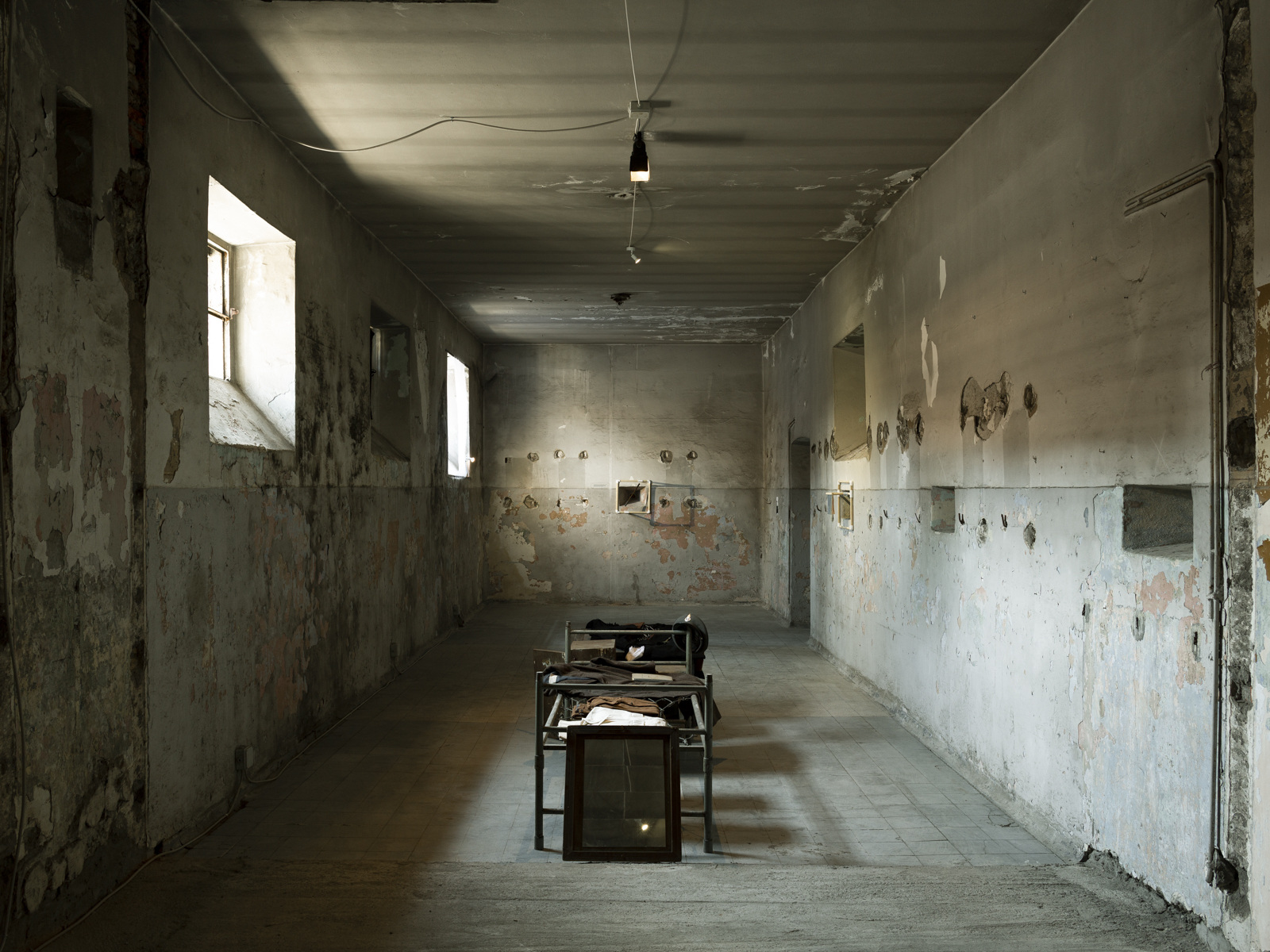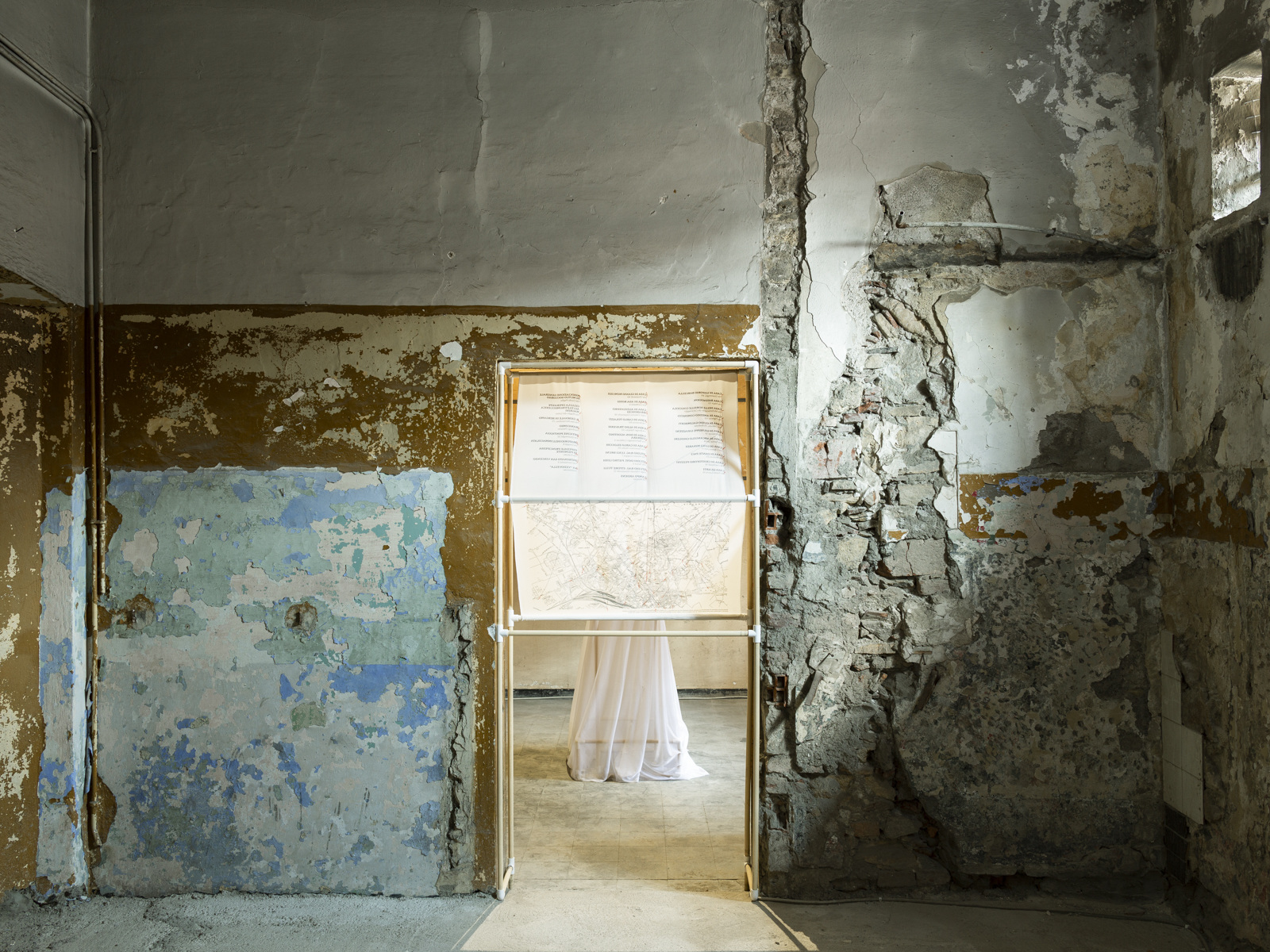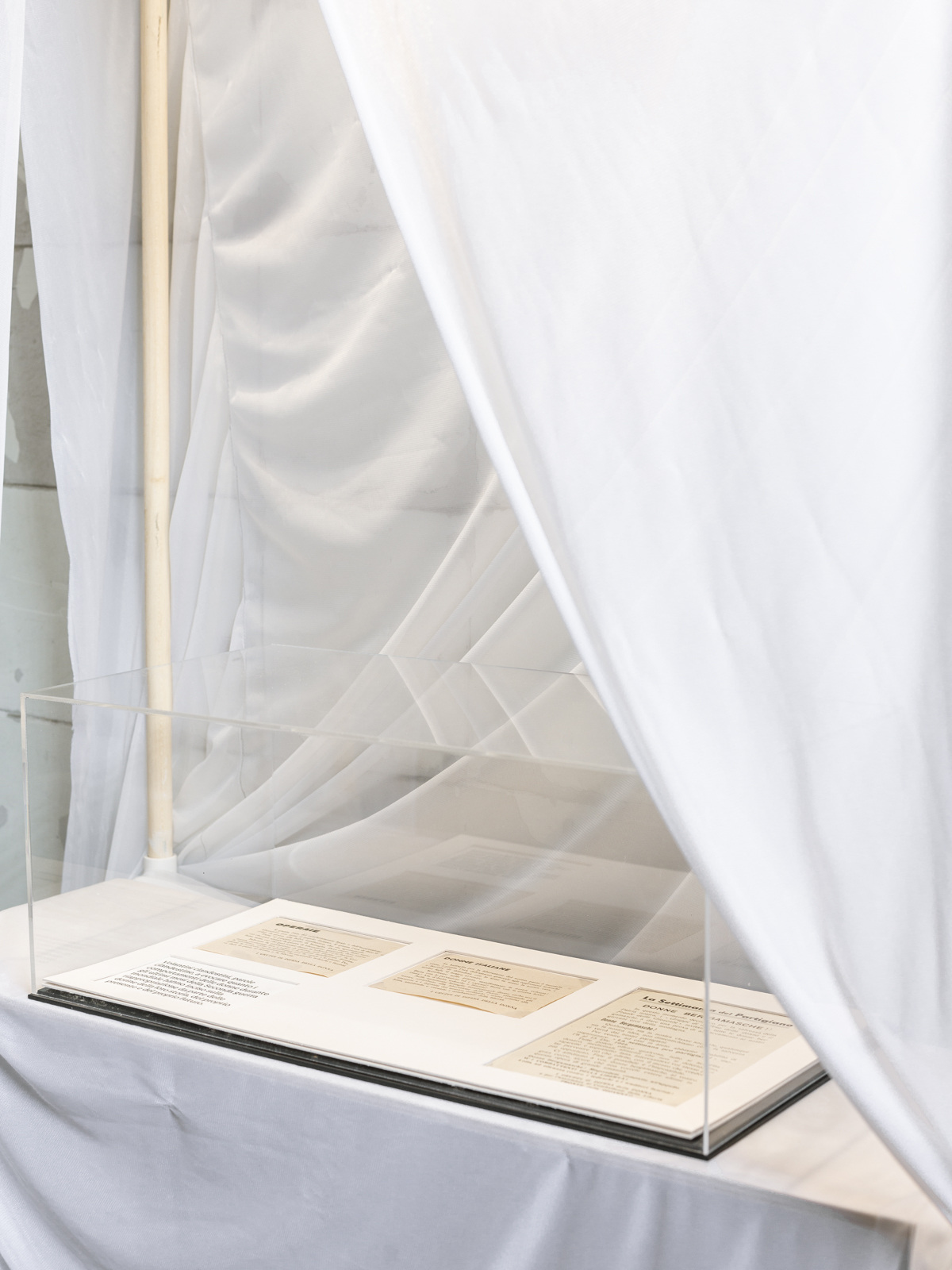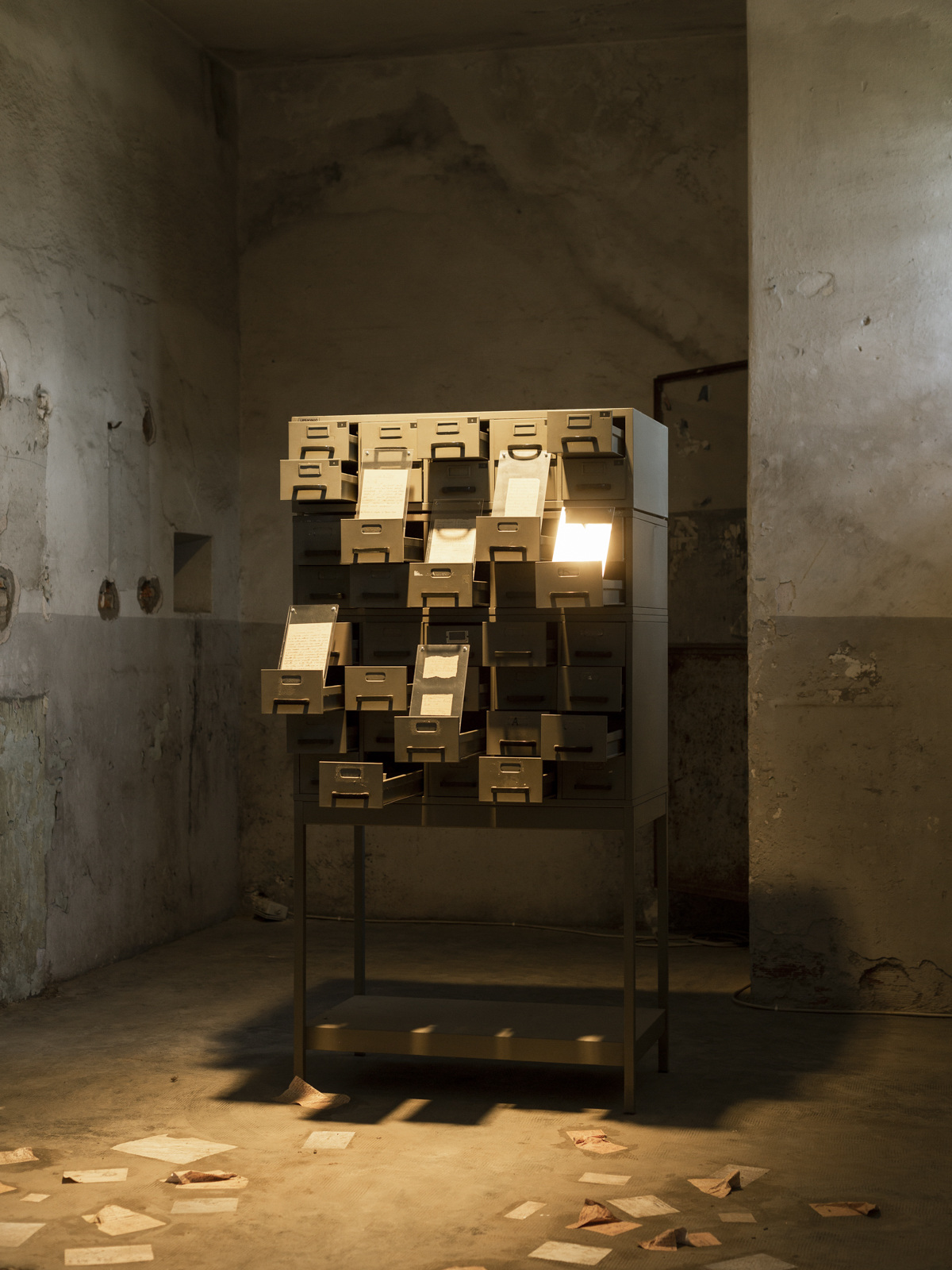Se Quei Muri
MAITE
ISREC (Istituto Storia della Resistenza e dell’Età Contemporanea)
Opened 2020
Type Expansive Installation
Client Sant’Agata, Bergamo
Exhibition curated by ISREC (Istituto Storia della Resistenza e dell’Età Contemporanea) and MAITE Association, in the former prison of Sant’Agata, Bergamo. The space dedicated to SE QUEI MURI is the second floor of the building, the one that best testifies the condition of the place at the time of its closure (in 1980); here, a long corridor gives access to six separated units, once the prison cells.



The exhibition reflects on the role of the prison during the last year of the fascist occupation of the city of Bergamo. The research conducted by ISREC during 2018-2020 gathered a relevant amount of written documents and some archive objects.
The curatorial choice was to exhibit only some of the most distinctive materials, using them as representative elements of defined thematic clusters, each corresponding to a specific spatial unit: 1) community, 2) body, 3) genre, 4) the other, 5) communication, 6) place.
The installation is developed through few recurring narrative devices: the centre of each unit is a totem, containing an archive object from the Prison archive, around which the other elements gravitate; on the walls and inside the niches are accomodated shelves, projections and curtains reproducing original documents, pictures, citations coming from ISREC archive.
The totems are the most figurative components as they evoke familiar equipments - an altar, a bedroom, a door, a window, a drawer, a cabinet - building a specific storytelling for each object.
A light bright veil is the recurrent material, it covers the totems and it is used to print reproductions and citations. The role of the fabric is to recreate an ambience of suspension, of something which has been emptied and is waiting to be re-inhabited: the veils are nesteled on the objects and windows as to protect them from light and dust, or as clothes hanging out to dry.
The curatorial choice was to exhibit only some of the most distinctive materials, using them as representative elements of defined thematic clusters, each corresponding to a specific spatial unit: 1) community, 2) body, 3) genre, 4) the other, 5) communication, 6) place.
The installation is developed through few recurring narrative devices: the centre of each unit is a totem, containing an archive object from the Prison archive, around which the other elements gravitate; on the walls and inside the niches are accomodated shelves, projections and curtains reproducing original documents, pictures, citations coming from ISREC archive.
The totems are the most figurative components as they evoke familiar equipments - an altar, a bedroom, a door, a window, a drawer, a cabinet - building a specific storytelling for each object.
A light bright veil is the recurrent material, it covers the totems and it is used to print reproductions and citations. The role of the fabric is to recreate an ambience of suspension, of something which has been emptied and is waiting to be re-inhabited: the veils are nesteled on the objects and windows as to protect them from light and dust, or as clothes hanging out to dry.







Full project conception and implementation: Francesca GottiPhotos: Giovanni Emilio Galanello
